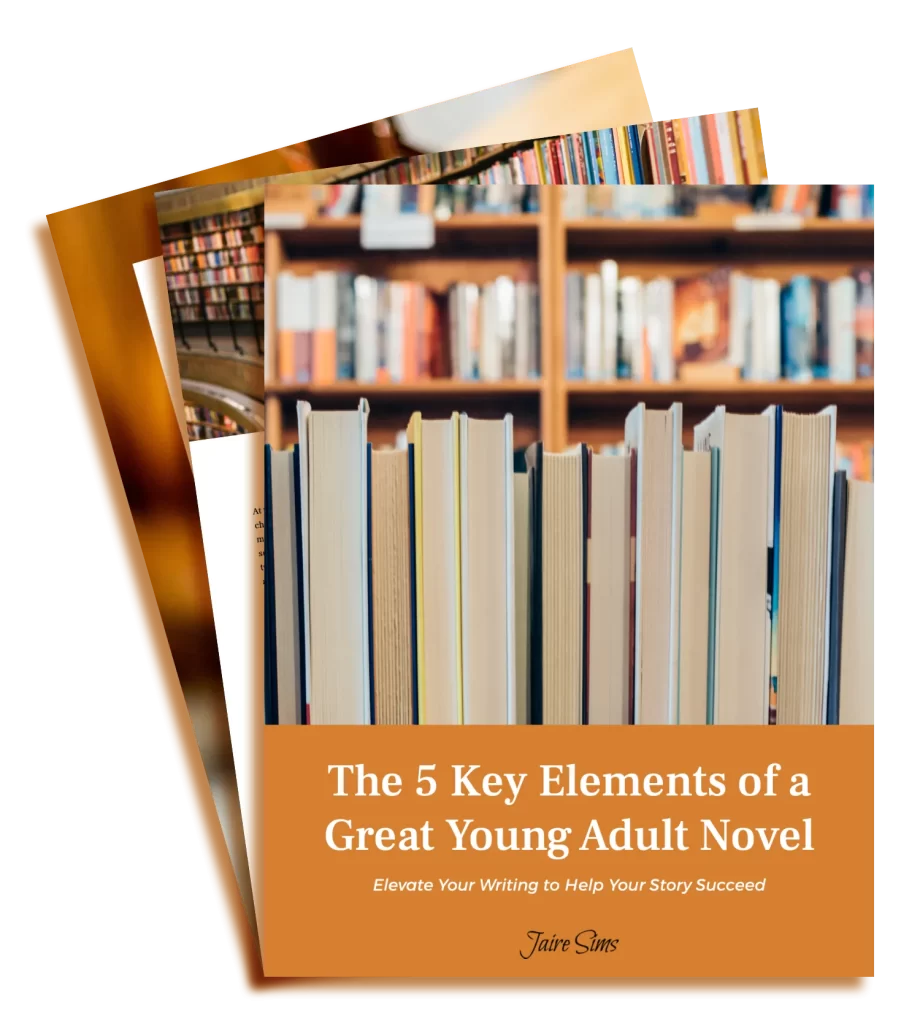Hooks and Openings in YA Fiction
Do you need help writing hooks and openings in YA fiction? Here’s the best guide on how to do just that!
Picture this: You pick up a novel, and within the first few sentences, you’re either transported to a magical kingdom or entwined in the struggles of a relatable protagonist. That immediate connection is no accident; it’s the result of a carefully crafted hook, a literary allure that draws readers deeper into the story.
As a storyteller, I’ve witnessed the transformative power of those initial words.
In this post, we’ll delve into the nuances of creating hooks and openings that resonate.
Keep reading for insights, tips, and a touch of magic!
The Art of Crafting a Hook

First and foremost, let’s unravel the mystery behind the term “hook.” In storytelling, a hook is that irresistible bait, the literary charm that seizes the reader’s attention and refuses to let go. It’s the spark that ignites curiosity, the gateway to a world where anything is possible.
The Role of the Hook
Imagine the first sentence of your story as the opening dance of a grand ball. It’s the moment where characters, plot, and setting gracefully twirl onto the stage. The hook is your dance partner, leading readers through the steps of anticipation and wonder. Its role is not merely to grab attention but to enthrall, to make readers willingly surrender to the enchantment you’ve woven.
In the forthcoming sections, we’ll delve into the anatomy of hooks, exploring different forms and dissecting what makes them magnetic.
Creating Intriguing Scenarios
Have you read the novel “The Throne of Glass”?
In the “Throne of Glass,” we see a renowned assassin, Celaena Sardothien, languishing in prison. The air crackles with anticipation as she is offered a chance at freedom through a high-stakes competition. This scenario not only introduces the complexity of the protagonist but sets the stage for a tale where every move carries consequences.
Crafting a hook is like revealing just enough to ignite curiosity while withholding sufficient information to keep readers hungry for more. It’s the delicate balance between offering a glimpse of the extraordinary and shrouding the whole story in an air of mystery.
Examining Memorable Openings in YA Fiction

In the opening of the “Throne of Glass” series, the air thickens with tension as an incarcerated assassin, Celaena Sardothien, is presented with an offer: to compete in a high-stakes competition for a chance at freedom.
The very essence of this scenario is a hook, a door swung open to reveal a world where shadows and secrets dance in tandem.
Deconstructing the Elements
1. In Medias Res Mastery: The narrative plunges into action immediately, placing readers amid a pivotal moment. This technique, known as in media res, ensures that the story grips readers from the very first line.
2. Character Introduction: Celaena Sardothien isn’t just introduced; she is unveiled as a complex character with a history, a reputation, and a future shrouded in uncertainty. This adds layers to the narrative, making readers eager to unravel the mystery of her character.
3. The Promise of High Stakes: The competition sets the stage for intrigue and suspense, creating a narrative promise that compels readers to turn the page. The stakes are not merely personal but extend to the fate of the kingdom, amplifying the tension.
Strategies for Crafting Powerful Openings

Atmosphere is the unseen enchantress that permeates the pages of a story. It’s the whisper of the wind, the scent of an ancient forest, and the weight of unspoken secrets. Crafting a powerful opening requires us to master this alchemy, inviting readers into a world that pulsates with life.
The Importance of Atmosphere
They set the tone for the entire masterpiece, guiding readers into the emotional landscape you’ve crafted. Whether it’s the foreboding gloom of a mysterious castle or the vibrant chaos of a bustling city, the atmosphere forms the backdrop against which your narrative unfolds.
To establish an atmosphere effectively:
-Engage the senses of your readers.
-Describe the play of light and shadow, the rustle of leaves, the distant hum of a bustling market.
-Make them not just observers but participants in your world. This immersive experience connects readers emotionally to your narrative.
Tips for Crafting Atmosphere
1. Use language as Brushstrokes: Choose your words deliberately, painting scenes with vivid language that evokes emotions and images.
2. Show, Don’t Just Tell: Instead of listing details, immerse readers in experiences. Allow them to feel the chill in the air or the warmth of the sun on their skin.
3. Symbolism and Metaphor: Use symbols and metaphors to convey the underlying mood. A stormy sky may mirror the protagonist’s internal turmoil.
The 5 Key Elements of a Great Young Adult Novel
Actionable Building Blocks to Set You on the Path to Success

Introducing Compelling Characters

Imagine your character as a locked chest and the introduction as the turning of the key. Create an aura of mystery that begs the reader to uncover the secrets within. Pose questions without immediate answers, leaving a trail of breadcrumbs that lead to revelations scattered across the narrative landscape.
Emotional Investment: The Heartbeat of Connection
To make characters leap off the page, weave threads of relatability or enigma into their introductions. For a relatable protagonist, draw upon universal human experiences—fears, desires, or aspirations. Readers should see themselves reflected in the character’s struggles.
On the other hand, an enigmatic protagonist invites readers to embark on a journey of discovery. Unveil facets of the character gradually, letting each revelation deepen the reader’s connection. Make them yearn for the next layer of the narrative tapestry.
Crafting Unforgettable Characters
1. Symbolic Imagery: Use symbolic elements in the character’s introduction that foreshadow their journey or inner conflicts.
2. Dialogue Dynamics: Let the character’s voice shine through dialogue, revealing facets of their personality and motivations.
3. Internal Monologue: Offer glimpses into the character’s thoughts, allowing readers to understand their inner world.
Challenges and Solutions: Navigating the Opening Gambit

Crafting an opening is akin to navigating a labyrinth – twists, turns, and unexpected hurdles. Let’s shine a light on some common challenges that may emerge:
1. Overwhelming Exposition: The temptation to lay out the entire world and its history in the opening can be alluring, but it risks overwhelming the reader.
2. Balancing Information: Striking the right balance between hooking readers and providing essential information can be a tightrope walk.
3. Creating Tension: It’s a challenge to infuse the opening with enough tension to keep readers engaged without revealing too much too soon.
Practical Solutions
1. Show, Don’t Tell: Rather than straightforwardly presenting information, immerse readers in experiences. Let scenes and characters unfold naturally, allowing information to seep in organically.
2. Start In Medias Res: Plunge readers into the heart of action or intrigue from the very beginning. This not only grabs attention but propels the narrative forward.
3. Character as the Conduit: Introduce information through the lens of your characters. Let their experiences and perspectives shape the reader’s understanding of the world.
4. Strategic Information Unveiling: Distribute essential information strategically throughout the narrative, creating a sense of mystery and anticipation.
Writing Hooks and Openings in YA Fiction Summary:

1. The Magic of Hooks: Hooks are the keystones of our narratives, drawing readers into worlds where anything is possible. They are the promises we make, the mysteries we unveil, and the beckoning whispers that echo beyond the first page.
2. Intriguing Scenarios: Crafting scenarios is the art of painting with words, and like any masterpiece, it requires a delicate touch. A balance between the known and the unknown, a dance between revelation and concealment.
3. Unveiling Characters: Introduce them like cherished companions, inviting readers to share in their journeys, joys, and tribulations. Let curiosity and emotional investment be the guiding stars.
4. Atmosphere as Palette: Let it be rich, evocative, and a sensory symphony that enchants readers, immersing them in the worlds we create.
5. Balancing Act: Balance hooks, information, and tension like a masterful dance, guiding readers through the labyrinth of your creation.
If you’ve been enjoying the advice I share in my blog, especially about writing hooks and openings in YA fiction, check out my free guide to help you kickstart your self-publishing journey or my course on how to self-publish.
I also welcome you to reach me at jsims@jairesims.com or check out my social media, where I share more insights and resources.
Happy Writing!







